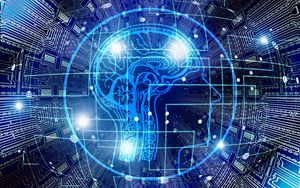(Finance) – It is estimated that by 2026 the HR tech will move a business volume equal to 92 billion dollars. AI and technology to support management are in fact playing a crucial role in solving problems such as talent attraction, talent retention And talent management. According to what was found by Gartner, 90% of HR managers plan to increase or maintain the budgets allocated to innovation in this sector also to fill a gap: less than 20%[2] of companies have significant data on their workers. For this reason, investments in People Analytics Technology are growing with a total value exceeding 3 billion dollars.
Glickonleader recognized by Gartner and Redthread Research in the market since 2014 software of HR tech for its innovative People Experience and People Analytics solutions, has identified and traced the 3 megatrends that will drive the sector in 2024. These are challenges that companies will have to face to remain attractive and innovative data-based solutions , TO THE And factor human – such as Glickon’s Mine data-platform – which are becoming a turning point for business results and people’s well-being.
Talent Intelligence. The application of business intelligence processes to talent, through a new data culture mediated by a harmonious alliance between the human factor and AI, will make it increasingly possible to optimize and improve research, listening, observation and management of people. By leveraging the collection and analysis of direct data (qualitative feedback, various types of surveys, etc.) and indirect data (emails, calendars, etc.), it will be increasingly possible to obtain predictive data and insights into your organization. The outputs will therefore be data maps with which HR, CEO and CFO will be able to orient themselves in their own reality and make informed and objective decisions to make strategic and decisive changes for their companies.
ONA And OmNA. Mapping informal relationships through Organizational Network Analyses, Operating Model Network Analyzes and an operational and process model – based on skills (what you do best), motivation (what is your “why”) and relationships (who you work best with ) – will increasingly allow HR and management to be offered the possibility of quantifying, thanks to “relational” data, how company clusters are interconnected with each other. But also discover and recognize informal or emotional leaders and predict the impact on organizational risk linked to their possible exit from the company.
People Experience. People are the most important asset for every organization. The increasingly required challenge for HR is to transform processes into personalized experiences starting from onboarding. Finding the right candidate in perfect “fit” with one’s reality and implementing engaging managerial performance processes are the central themes for the HR sector also in 2024. Data and AI can in fact today help organizations to accept these challenges as well as the investment in training: upskilling and reskilling are and will remain two of the strongest levers of Talent Attraction and Talent Management.
“Knowing how to grasp and read the vital signals of an organisation, improve and innovate HR processes with the aim of transforming them into experiences and building attractive, sustainable work environments where people are connected are the main challenges that emerge from our sector” – he commented Carlo Rinaldi, Chief Marketing Officer Glickon. “Technology, the humanized use of AI and relational data make these challenges actionable today and in the future. Our distinctive approach allows us to apply business intelligence processes to talent, thus observing the organization, with the appropriate tools, in all its relevant aspects”.
